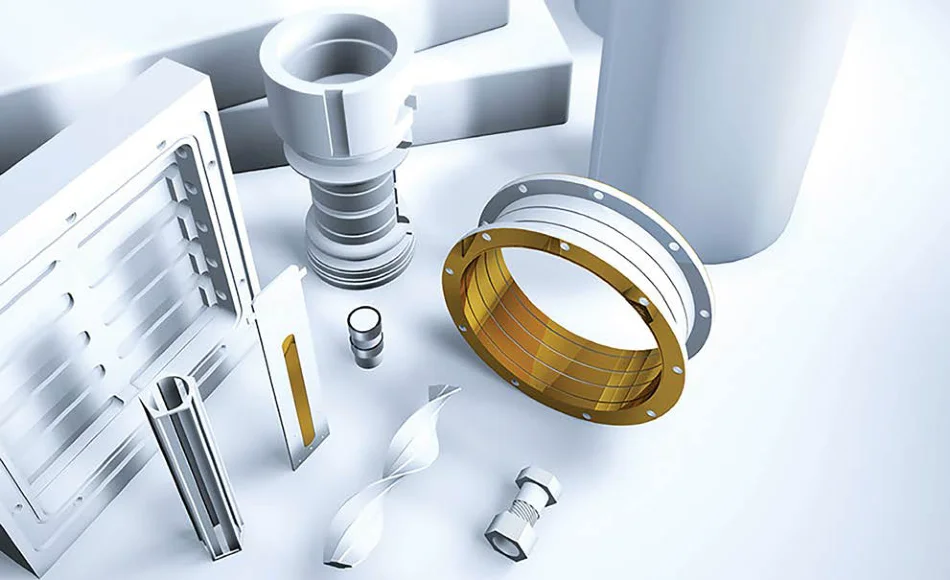The importance of powders to advanced ceramics

The importance of powders to advanced ceramics is directly reflected in people’s definition of advanced ceramics.
The general definition of advanced ceramics is: using high-purity, ultra-fine artificially synthesized or selected inorganic compounds as raw materials, having precise chemical composition, precise manufacturing and processing technology and structural design, and having excellent mechanical, acoustic, optical and thermal properties. Ceramics with , electrical, biological and other properties are oxides or non-oxides composed of metallic elements (Al, Zr, Ca, etc.) and non-metallic elements (O, C, Si, B, etc.). They are composed of ionic bonds and covalent bonds. Bonded jointly bonded ceramic materials.
In terms of chemical composition, two aspects are generally pursued: high purity and precise ratio.
In terms of high purity. The presence of impurities can sometimes seriously affect the performance of products. For example, impurities such as silicon, calcium, iron, sodium, and potassium often exist in high-purity alumina. The presence of iron impurities will make the sintered material black and dark; sodium and potassium impurities will affect the electrical properties of the material, causing its electrical properties to deteriorate; and the remaining two impurities will cause the material’s grains to grow abnormally during the sintering process. In terms of transparent ceramics, the impact of impurities is even greater. The presence of impurities in ceramic powder will directly declare the “blindness” of transparent ceramics. This is because impurities, as the second phase, are very different from the optical properties of the ceramic body material, often causing Scattering and absorption centers will greatly reduce the light transmittance of ceramics. In nitride ceramics such as silicon nitride and aluminum nitride, the presence of oxygen impurities can lead to a decrease in thermal conductivity.
In terms of ratio. In ceramic production formulas, most of the time there is no need for an extremely “high-purity” single component, but some auxiliary materials, such as sintering aids, are often added. In this case, accurate proportioning is the most basic requirement, because different chemical compositions and contents will have a decisive impact on the performance of the product.
Phase composition
Generally, the powder is required to have the same physical phase as the ceramic product as much as possible, and phase change is not expected to occur during the sintering process. Although sometimes phase change can indeed promote the densification of ceramics, in most cases, the occurrence of phase change is not conducive to the sintering of ceramics.
Particle size and morphology
Generally speaking, the finer the particles, the better. Because according to the existing sintering theory, the speed of body density is inversely proportional to the size of the powder (or its size to a certain power). The smaller the particles, the more conducive to sintering. For example, due to its high specific surface area, ultrafine aluminum nitride powder will increase the sintering driving force during the sintering process and accelerate the sintering process.
The better fluidity of ceramic powder with regular shape will have a positive impact on subsequent molding and sintering. The granulation process is to allow the powder to form a spherical shape under the action of the binder, which also indirectly shows that Spherical ceramic powder plays a positive role in improving the density of ceramics during the molding and sintering processes.
Uniformity
The uniformity of powder is easily overlooked, but in fact its importance is more important than the previous aspects. In other words, the performance of the previous aspects is very important to see its uniformity.
The same goes for particle size. Fine particle size is important, but if the average particle size is only fine and the distribution is uneven or very wide, it will be extremely detrimental to the sintering of ceramics. Because particles of different sizes have different sintering speeds, areas with coarser particles are not likely to be dense. At the same time, coarse particles may also become the nucleus for abnormal grain growth. Finally, the ceramic not only needs to be densified at a higher temperature, but also has an uneven microstructure, seriously affecting its performance.
